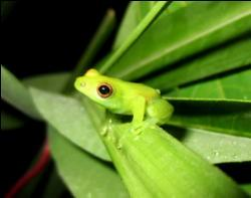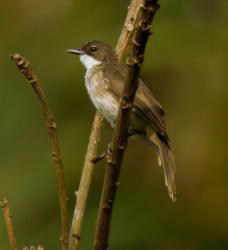Animal Testing in a normal daily conversation would be equivalent to topics such as politics, sports and religion, considered too controversial to be discussed. The difference is that instead of simply avoiding them as there will be no agreement, in biological science arguments and conclusions are based on facts and evidences not shallow or personal opinion. And that is why discussions especially about controversial subjects are intrinsic in order to increase and spread knowledge.
Philosophic and Ethics Approaches
As any other controversial topic, there are two positions when it comes to animal experiments. They were defined by the philosopher Lori Gruen as utilitarians and abolitionists. The first one is concerned with “maximising pleasure and minimizing pain for all those affected by any given action”. In others words, animal experimentation can be considered ethically acceptable when human benefits are gained and they could not be obtained by other methods. One of the most popular utilitarian philosophers about animal rights is Peter Singer, professor of bioethics at Princeton University. He has written Animal Liberation where he argues that humans and other animals should be treated in accordance with the principle of equality, what does not mean that they should receive the same treatment, but that should be considered equal, respecting their limitations, demands and welfare. He is also against “speciesism” a term that he defines as “prejudice or attitude of bias in behalf of the interests of members of own species and against those of members of other species”.
The second group, abolitionist, never consider animal testing ethically justifiable as it uses a living being as an object of study for their own purposes, even if the result of this experiment would end more suffering than it would cause. They also argument that no benefits to human being are proven and there would be always other ways instead of animal testing.
Law and Statistics Approaches
The most recent publication of the Annual Statistics of Scientific Procedures on Living Animals produced by the Home Office compares the number of procedures between the years of 1995 and 2013 in Great Britain. It shows that it increased by 52%. However, at the same period, procedures involving dogs, non-human primates, cats and horses decreased by 23%. Mice, fish and rats were the most commonly used species in 2013, with approximately 3.8 million procedures.
In the UK, these are the animals testing figures in average:
| Rodents |
84% |
| Fish, amphibians, reptiles |
12% |
| Large mammals |
2.1% |
| Small mammals |
1.4% |
| Dogs and cats |
0.3% |
| Primates |
0.1% |
The numbers of procedures for safety testing (toxicology) decreased by 0.5% to 375,000. A similar proportion to 2012 were undertaken to meet at least one legislative/regulatory requirement (92% compared with 94%).
Research using animals is required and at the same time controlled and regulated by The Animals (Scientific Procedures) Act 1986, Amendment Regulations 2012 (ASPA). As it says, any new drug must be tested on at least two different species of live mammal, one of which must be a large non-rodent. This intends to avoid such cases as ‘Thalidomide’ to happen again. The drug started to be marketed in 1957 in Germany. It claimed to cure anxiety, insomnia, gastritis, and tension. Afterwards, it was also used against nausea and to alleviate morning sickness in pregnant women. But shortly after the drug was sold between 5,000 and 7,000 infants were born with phocomelia (malformation of the limbs). Only 40% of these children survived. Throughout the world, about 10,000 cases were reported. Only 50% of them survived. This mainly happened because only rats and mice were used in the tests and they were immune to its adverse effects. No carcinogenicity was demonstrated.
Although, the British laws also insists that no animal experiments can be conducted if there is a realistic alternative way to do it. It is required three Home Office licenses to start a new experiment that involves testing on animals – for the institution, the scientist and the project itself. They must outline the potential benefits of the research project as well by weighting them against the likely cost to the animal’s wellbeing.
Random inspections and on-site vets are mandatory. And great apes, such as chimpanzees, cannot be used in experiments.
Technology
Despite all the discussions, arguments and complexity of this theme, it is agreed that no useless harm or suffering in vain should be done to any animal. However as the technologies are still being developed, the animals testing are still in considerable numbers. In order to reduce the impact of research on animals, it was created a set of principles called ‘The three Rs’, which are:
Reduction: reducing the number of animals used in experiments by e.g. improving experimental techniques, improving techniques of data analysis, sharing information with other researches.
Refinement: refining the experiment or the way the animals are cared to avoid or minimize their suffering by e.g. using anesthetic drugs when doing invasive procedures, better medical care and living conditions.
Replacement: replacing experiments on animals with alternative techniques.
There are plenty of new technologies either ready to use or under development to replace some of the procedures using animals. They can be easily found on the internet and researches are encouraged to look for them also in articles, dissertations or scientific releases before starting a new experiment.
As one of the recent examples we have “organs-on-chips” created by the Harvard’s Wyss Institute. They are microengineering devices that are lined by human cells, simulating the structure and function of human organs and organ systems and as result they can reconstitute organ level functions. They can therefore be can be used in druging tests, disease research and toxicity testing.
Learn more: https://youtu.be/Mg2fJ0UBj_0
 Image extracted from: http://www.cyprusupdates.com/2014/04/animal-rights-political-party-founded-cyprus/
Image extracted from: http://www.cyprusupdates.com/2014/04/animal-rights-political-party-founded-cyprus/
Rafael Arnoni Trovó






 Image extracted from: http://www.cyprusupdates.com/2014/04/animal-rights-political-party-founded-cyprus/
Image extracted from: http://www.cyprusupdates.com/2014/04/animal-rights-political-party-founded-cyprus/





